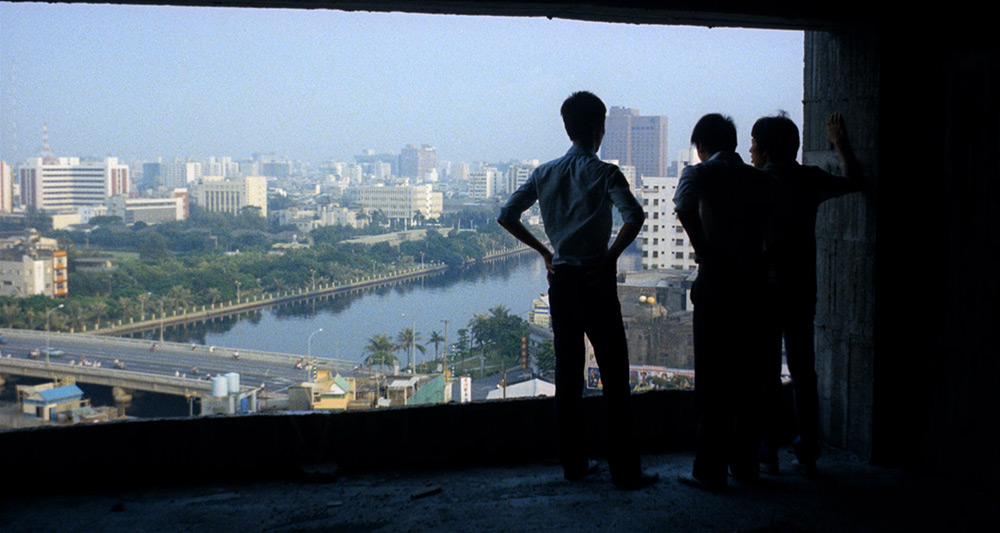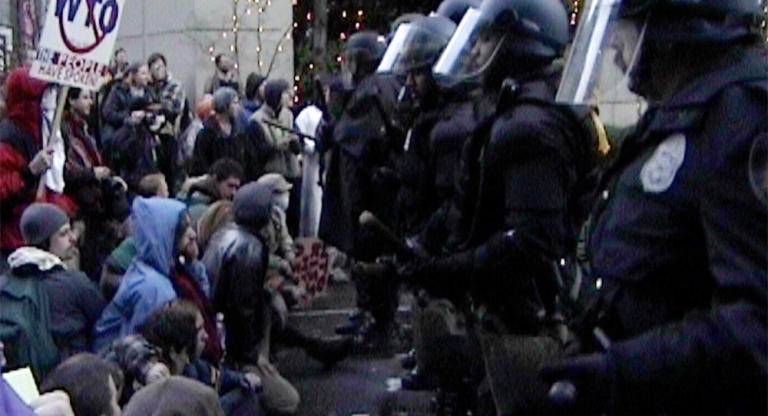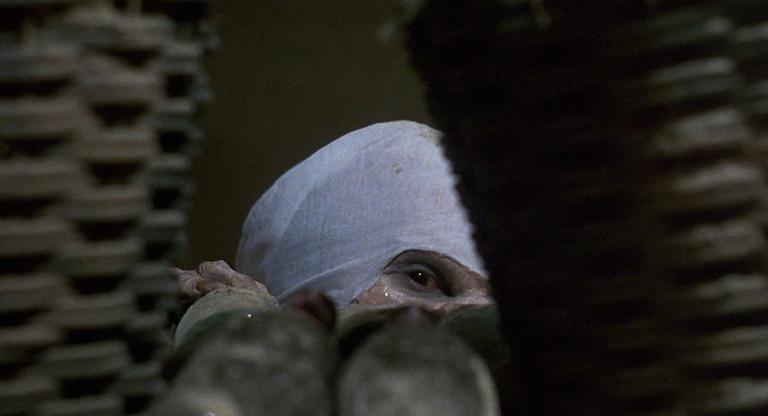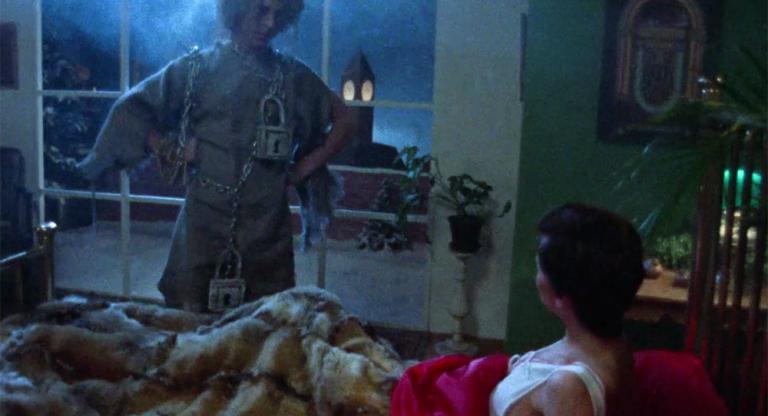Over the past few months, I have strayed a bit from the direct task of reporting on each month of repertory filmgoing in New York City by pursuing a series of theses that reflect my own attempts at making sense of its scene: its abundance of films, its tired trends, and its insatiable audience. This month, in lieu of any grand or minor statement, I wanted to dial back a bit and rattle off a few memories from a few recent screenings that have stuck with me.
Back in January, Inney Prakash presented a 35mm print of Hou Hsiao-Hsien’s The Boys from Fengkuei (1983), kicking off a new chapter in film programming for Asia Society. The venue’s 258-seat theater was packed with guests, and Prakash has continued to import rare prints from all over the globe as part of the series “Films to See Before You Die.” The premise of the series is such that open-endedness informs its programming, meaning New York filmgoers can enjoy a rare screening of Naomi Kawase’s Suzaku (1997) one month and R.D. Pestonji’s Country Hotel (1957), a major work of Thai cinema that’s been virtually unseen in New York, the next. Prakash also organized a retrospective of Ang Lee’s films earlier this year, featuring 35mm presentations of bonkers action films like Hulk (2003) and Gemini Man (2019), as well as titles with more widespread respect such as Eat Drink Man Woman (1994) and Crouching Tiger, Hidden Dragon (2000).
And while all of Prakash’s programming at Asia Society has been great, The Boys from Fengkuei merits special recognition as a tip-top showcase of formally daring, politically sharp filmmaking from a director settling into his groove. That Hou would make a film with such qualities isn’t a surprise; nevertheless, there remains a certain magic to the adventurousness of The Boys from Fengkuei, an early feature from the Taiwanese director about a group of young friends from a fishing village who seek out work in the port city of Kaohsiung. The Boys from Fengkuei’s camerawork, like its cast of teens, is consumed by waywardness. It zigs and zags, coming into constant clashes with the cityscapes it depicts. The effect is such that I found myself a bit lost after its credits rolled, and yet the film’s images have lingered with me months later. In particular, a scene in which the main group of teens stares out an unfinished window from within an abandoned, concrete building returns to me time and time again. Their view of Kaohsiung carries the weight of authority that commands any perspective aiming down at a city, as that of an onlooker on a roof or a passenger in a plane, while the concrete frame in sight denies them that authority, evincing that a wasteful corporatism stands between them and their ambitions. Such delicate framing has to be celebrated, especially in a city where so many dreams are deferred by wasted, or inaccessible space—vacant lots, empty office buildings, rent-controlled apartments in limbo, and the proliferation of their exorbitantly-priced counterparts.
The detours of life are central to the filmmaking of Angela Schanelec, whose film Marseille (2004) screened at L’Alliance New York on 35mm in April as part of the series “Postcards from the South: The Film of Bonjour Tristesse.” While her work has become a definite touchstone for a new generation of filmmakers, I find it odd that her films rarely show in New York’s repertory scene. Marseille, about a Berlin photographer’s trips to the French coastal city and her dabbling in a new life away from her family, is one of her best. Like most of Schanelec’s films, it teeters between an extreme intimacy and sudden distance with its characters and their dilemmas. Schanelec works according to feeling, her understanding of setting and psychology expressed in sometimes terse, and other times languorous, scenes that cut straight to the heart of her intentions, whether to reveal an outburst of desire or a crisis of character. That emotional intuition is matched with elegant filmmaking has become all too rare in modern cinema, where intuition almost always gives rise to indulgent supercuts and elegance to empty niceties. Watching a film like Schanelec’s, which matches both intuition and elegance to perfect effect is cause for celebration.
Jia Zhangke’s ability to cut to the raw nerves of recent Chinese history through vivid, personal storytelling is on full display in his sprawling period film Platform (2000), which screened at IFC Center in early May on 35mm. His film traces the lives of a theater troupe from the late ‘70s to the ‘90s, capturing the encroachment and acceptance of globalization in China through people’s outfits, haircuts, moods, and ideologies. What Jia accomplishes in Platform is remarkable, situating massive societal shifts in the smallest of interactions, and placing the concerns of a nation in a small group of artists without ever losing sight of their personal triumphs and tribulations. Jia’s graceful move through the decades, now a perfect companion to the flipbook epigrammatics of Caught by the Tides (2024), puts forth a paragon of filmmaking as that rare, sweeping epic that’s subtle, smart, and surprising.
Over at the Museum of Modern Art, I caught 16 short films by the trailblazing filmmaker Sarah Maldoror. This was divided between two screenings, one of which presented two films and the other 14. Both screenings were a joy, as rare opportunities to catch major films from the director that are hard to access, and to celebrate her work in a public setting. Films like Aimé Césaire, Un homme une terre (1976) and Opening of the Theater Noir in Paris (1980) feel like perfect examples of Maldoror’s unique talents as a portraitist—not of individuals, but of entire scenes. Her filmmaking throughout these screenings, which were accompanied by many more in MoMA’s retrospective, carried with it a real attentive quality: to the people she interviewed, to how the light fell on their face, and how their body worked with their surroundings. This total awareness of hers, which manifests as respect in her practice, was a thrill to experience. Here’s to hoping I am able to catch more of her work in the future.
Most recently, which is to say one week ago, I attended Light Industry’s 16mm presentation of Miguel Littín’s Jackal of Nahueltoro (1969). That Littín remains little-seen in New York despite his status as one of Latin America’s most uncompromising talents is a shame. To watch Jackal of Nahueltoro is to be knocked with sheer wit and emotion. Littín’s work is strange, though totally affecting: a re-imagining of the true story of Jorge del Carmen Valenzuela Torres, a farmworker who drunkenly murders a woman and her five children, but undergoes a process of reformation in prison as he awaits death by firing squad. Though its existential heart shares a tragic edge with a film like The Enigma of Kaspar Hauser (1974), Littín forgoes any sort of grandiloquence, instead delivering an immediate, emotionally searing portrait of a man that society refused to take care of before or after his crime.
For me, Jackal of Nahueltoro caps a period of film programming with much more to offer, especially through the summer months, as newer venues like Low Cinema and Life World expand their own programming. As is evident, the films I have mentioned in this piece are of a definite political bent, and though varied in look, the product of true crafts- men and women whose concern for aesthetic cohesion went hand-in-hand with their political conviction. Such films are popular and will prevail in New York cinemas—as beacons of hope, examples of how to act under political hardship, and symbols of an art to follow and remember.
Feedback Loop is a column by Nicolas Pedrero-Setzer reflecting on each month of repertory filmgoing in New York City.



